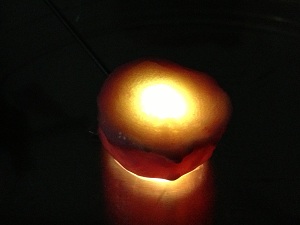Project description
The Nucleus Pulposus (NP) is the inner part of the inter-vertebral disc of the spine. The NP functions as the equivalent of an air-filled tube in a tire that distributes pressure in all directions in the disc under compressive loads.
NP degeneration is in part responsible for lower back pain, a pandemic medical problem that costs up to 1-2% of the GDP in OECD countries. The currently available surgical options for treating lower back pain are moderately effective with the majority of them having no proven track record. Surgeons are looking towards more physiological solutions. A particularly attractive option is to surgically replace the NP with a synthetic material. Such an operation can potentially be performed in a minimally invasive manner.
It is the purpose of this project to develop a synthetic material as a replacement for the NP and to develop minimally invasive methods to insert the material and to monitor externally that its mechanical characteristics in situ match those of a biological healthy NP.
This project is a collaboration between the LTC (Laboratoire de Technologie des Composites et Polymères), the LBO (Laboratory of Biomechanical Orthopedics), the LAPD (Laboratory of Applied Photonics Devices) and the CHUV (Centre Hospitalier Universitaire de Lausanne). A synthetic material made out of a composite reinforced hydrogel has been developed by the LTC/LBO that has structural characteristics similar to that of the NP. This composite hydrogel is an excellent candidate for the replacement of the NP. In contrast to other hydrogels in development for NP replacement, the current composite hydrogel developed at EPFL can be photopolymerized and tailored to independently control both mechanical and swelling properties. Such characteristics represent a unique advantage in the perspective of restoring a functional NP in a minimally invasive manner. Initially, the synthetic material is in liquid form and thus it can be inserted in the spine through a small diameter tube. Even smaller lightguides, similar to those used in telecommunications, bring light in situ to harden the liquid material and create the functional synthetic Nucleus Pulposus.

Bovine intervertebral disc with injected gel inside, during photopolymerization
Contact: Andreas Schmocker.